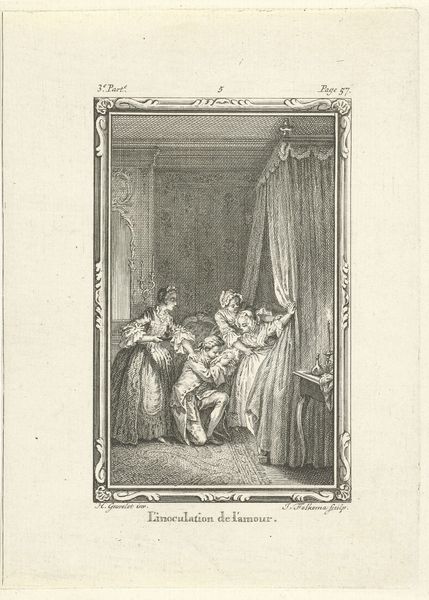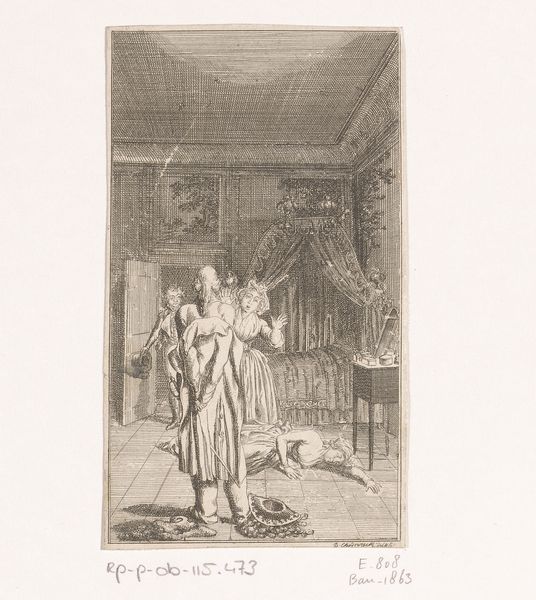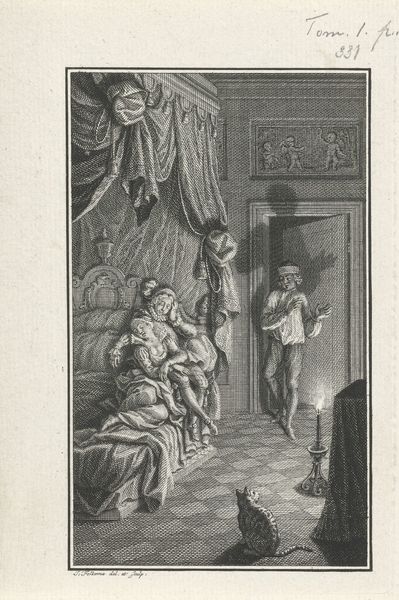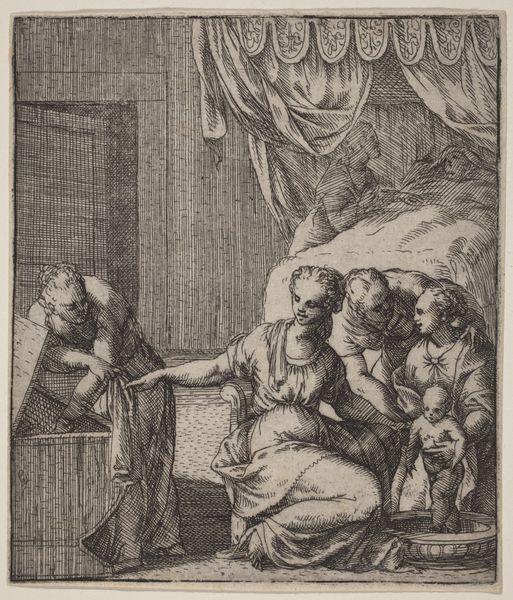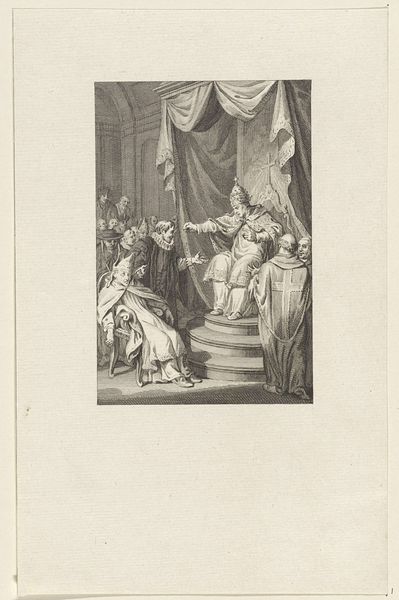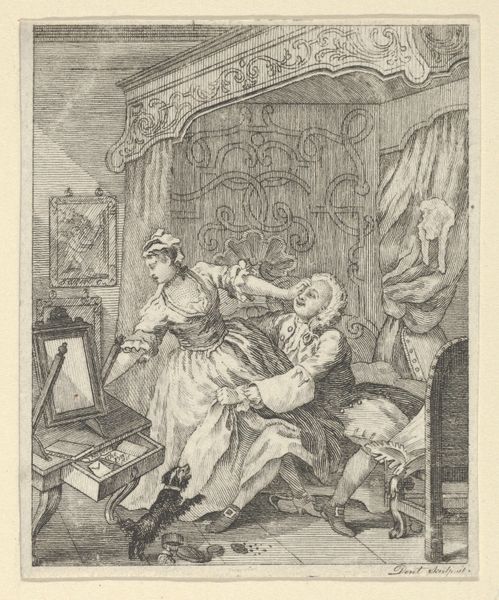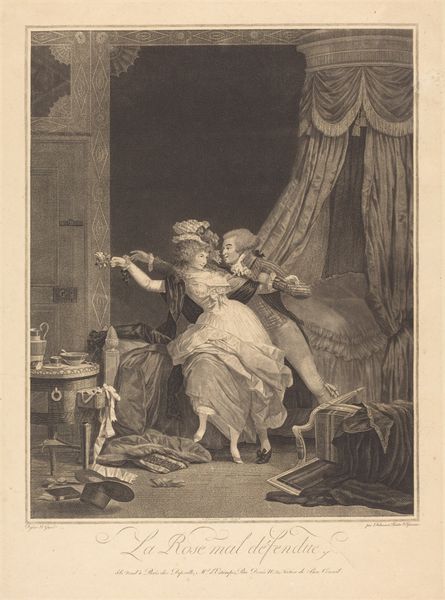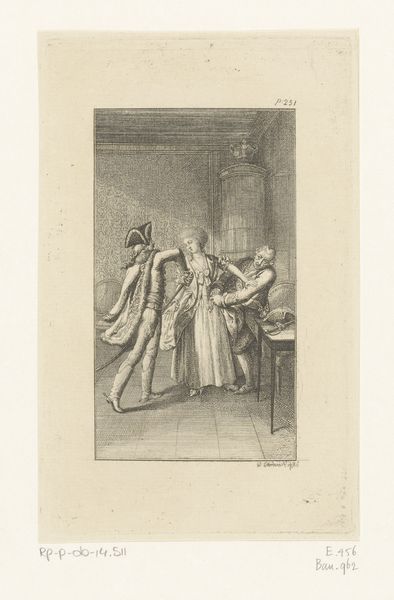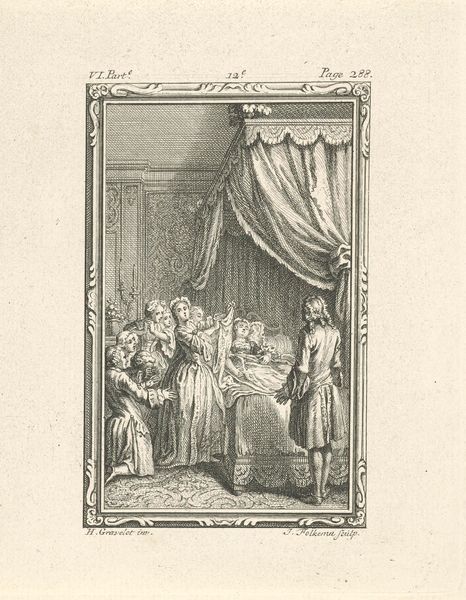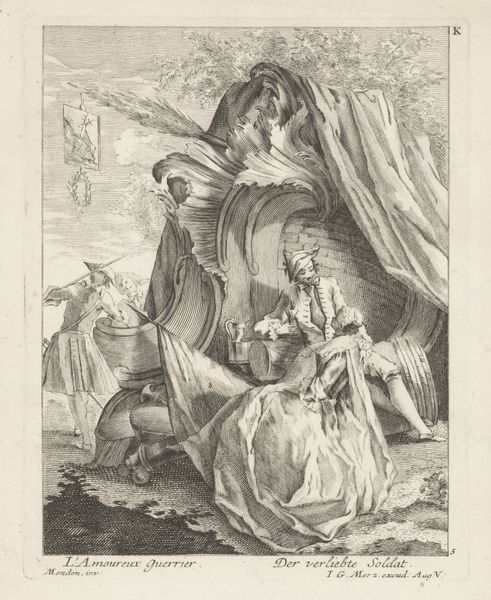
drawing, print, engraving
#
drawing
#
baroque
# print
#
history-painting
#
engraving
Dimensions: sheet: 5 5/16 x 2 7/8 in. (13.5 x 7.3 cm)
Copyright: Public Domain
Curator: Here we have William Hogarth’s engraving "Cassandra, Frontispiece, Vol. 3," created in 1725. It currently resides here at the Metropolitan Museum of Art. Editor: My first thought is how constrained the scene feels, almost claustrophobic. All those incredibly fine lines are meticulously organized; what a skill! Curator: Hogarth's work frequently engages with historical and literary themes, and in this print, the composition focuses on Cassandra, daughter of King Priam, from Greek mythology. Notice how the Baroque style infuses the image with heightened drama, using sharp contrasts and elaborate details. Her prophetic gift, cursed to never be believed, makes her a tragic figure, often portrayed as a symbol of truth ignored or disbelieved. Editor: The act of making something like this is such a fascinating endeavor to think about. Hogarth meticulously etched those tiny lines on a copper plate, essentially mass-producing drama and critique, available to a growing market eager for accessible imagery. Curator: Absolutely. This piece distills an enduring psychological narrative into a visual one. Cassandra’s gesture, her wild expression, suggests not just despair but frustration—a common human experience when trying to communicate inconvenient truths. It makes us ponder how societal structures often suppress uncomfortable knowledge. Editor: And think of the socio-economic implications. Engravings like these provided employment to many artisans and expanded literacy among lower classes through imagery. Each impression from the press makes us think about labor and the dispersal of ideas through printed media in the 18th century. The print’s physical existence echoes how ideas take root and spread through a populace. Curator: That's right. Looking closer, the placement of figures seems to indicate an intimate yet stifling setting, which evokes her prophetic entrapment. Hogarth seems to question what it means to be trapped with knowing but without power. Editor: It truly brings forward the potential and power found in materials and artistic distribution; it underscores accessibility and questions social and cultural power systems in England at the time, while still making reference to figures found in Ancient Greece. Curator: Yes, reflecting upon how timeless, unfortunately, such dynamics are. Editor: Exactly. I hadn't considered Cassandra in such context, such access—fascinating.
Comments
No comments
Be the first to comment and join the conversation on the ultimate creative platform.
